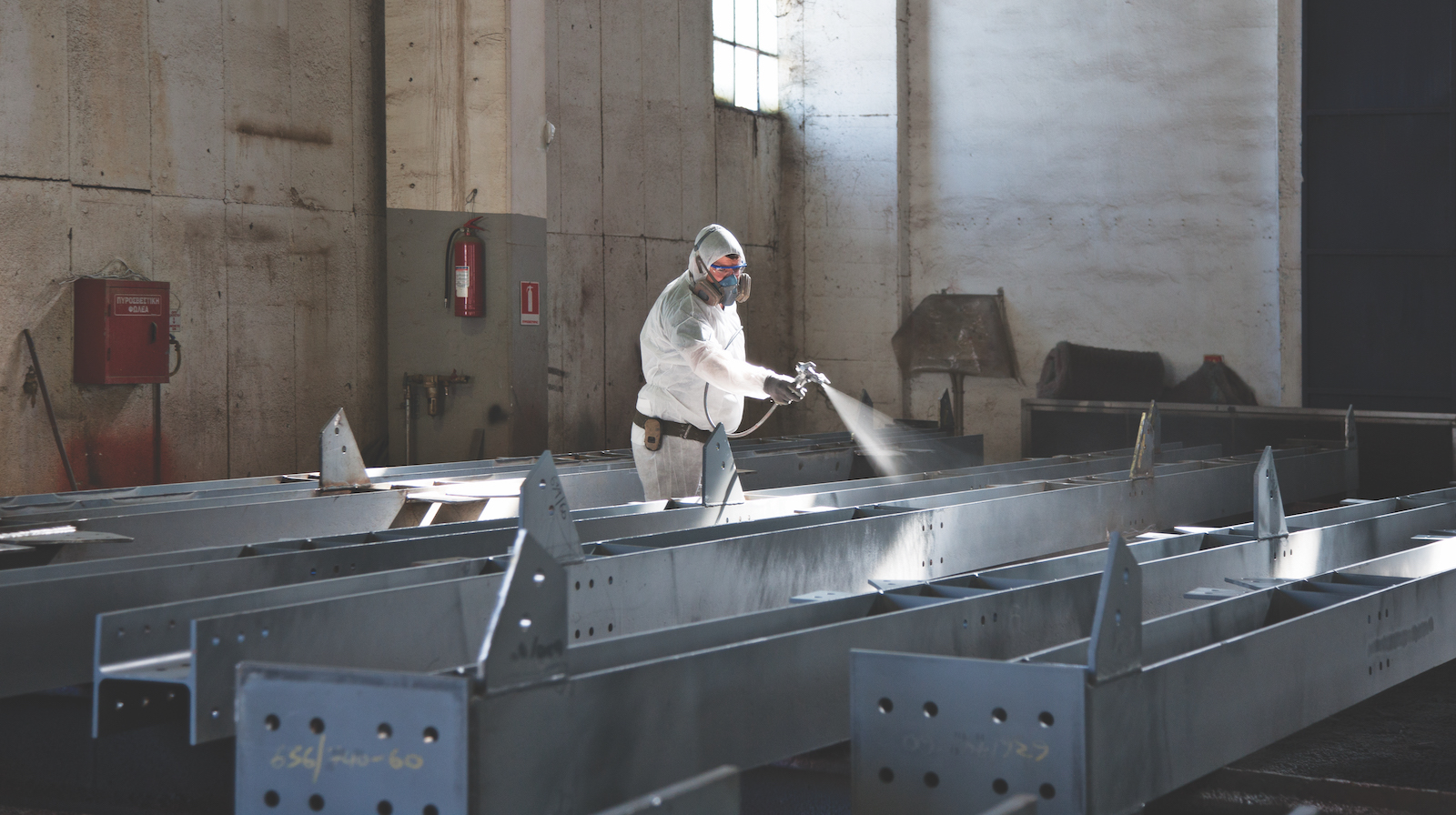New guidance and training will improve steel’s resistance to both fire and corrosion, writes Dr David Moore

Fire safety is not a common concern for the steel sector. However, the tragic events at the Grenfell Tower in 2017 prompted the British Constructional Steelwork Association (BCSA) to review the National Structural Steelwork Specification (NSSS).
A further driver was corrosion, a perpetual problem for steel in all industries, with a destructive cost estimated at £1.8bn worldwide and £46bn in the UK, including downtime, maintenance and replacement of assets. Effective anti-corrosion measures improve the design life of structures and reduce structural failures.
The outcome of the review was the creation of a new section in the NSSS for the specification, purchase, application and inspection of intumescent paint.
Both a fire protection product and a protective coating, intumescent paint reacts when exposed to heat and swells up to provide insulation. This insulation, or char, enables intumescent coatings to provide a reactive fire protection solution on structural steel; its insulation properties slow down the time it takes for steel components to reach their failure temperatures.
Responsible painting coordinators training
BCSA course planned
The BCSA has developed a training course for responsible painting coordinators, who will oversee all aspects of the application of both protective coatings and intumescent systems including specification, preparation of steel, application of paint, inspection and adherence to health and safety requirements.
The responsible painting coordinator will also be in charge of ensuring that the qualifications and training of those preparing the steel, the paint applicators and the inspectors meet the required standards.
The training course runs for three days and covers most types of steel-framed structures. It only applies to surface preparation, protective coating and intumescent application practices carried out in-shop and not on site except
for repairs and maintenance of the coating system.
BCSA hopes to launch the course once covid-19 restrictions end.
Intumescent coatings can be applied either in-shop (off site) or on site. However, the causes of intumescent failures suggest that in-shop application is much less prone to failure than application on site.
The challenges for site application are the adverse effects of bad weather during painting as well as having to apply an intumescent onto a fully cured primer which may have been exposed to contaminant like road salts and site dirt during transportation of the steelwork to site.
In winter, the necessary environmental conditions can be especially difficult to achieve and an intumescent may be exposed to condensation, wet weather and ponding before its protective sealer coats can be applied. These issues can cause detachment of the intumescent from the primer coat.
It is for these reasons that the new section on intumescent coatings in the NSSS is limited to application in-shop rather than on site.
Intumescent systems are an essential part of a structure’s fire safety and it is important to ensure that these systems are correctly specified, applied and inspected. Overall responsibility for this task should be assigned to a ‘responsible painting coordinator’.
A competent and knowledgeable person should inform authorities and clients that the system has been applied correctly, and this information should form part of the ‘golden thread’ of project information – from specification to application – as set out in the Hackitt report.
For BIM Level 2 projects, the NSSS requires the steelwork contractor to provide COBie data – including information on fire and correction protection systems – in the O&M manual issued to the client.
Dr David Moore is CEO of the BCSA.
Comments
Comments are closed.











Or just use concrete instead!
Steel construction, the way forward. From quality suppliers of course!